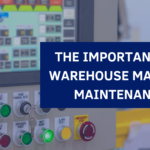
# The Importance of Semi-Automatic Solutions in Transformer Manufacturing
Transformers play a crucial role in the power grid, providing the necessary transformation of electrical power for facility use. These devices, varying in size, are manufactured by leading electrical transformer manufacturers. In this article, we will explore the challenges faced by these manufacturers and the solutions they have implemented to enhance their production processes.
One of the key steps in transformer manufacturing is the identification of leaks caused by bad or incomplete welds. This is essential to ensure the safety and quality of the final product. Traditionally, standalone tilt and test machines were used to position and pressurize smaller transformers for leak detection.
However, with the increasing demand for larger transformers due to changes in power consumption, manufacturers encountered a unique challenge. The size of these units made it difficult to transport them from the welding station to the leak test machine, which was located in a different area of the plant.
To address this challenge, a semi-automatic solution was devised. This solution involved conveying the transformer into the leak tester, where hydraulically operated arms and fingers would locate and hold the top of the tank in place. A rubberized top platen would then create a seal on the top of the transformer, and the unit would be filled with air pressurized to 3 pounds per square inch (psi).
Once pressurized, the machine would tip the unit and extend bridging planks, allowing the operator to easily access all the welds for leak testing. The operator would spray a soapy testing liquid on the welds, and any leaks would be identified by the formation of bubbles in the liquid. This allowed for immediate repair or marking of defective welds.
Compared to using standalone machines, this semi-automatic solution significantly increased productivity and throughput. It eliminated the need for time-consuming transportation of the transformers, enabling the manufacturer to handle larger units efficiently.
An interesting aspect of this project was the realization that the use of robots in the welding process led to inconsistencies and errors in the welds. By reintroducing human operators and removing some of the robots from the welding process, the manufacturer achieved better weld quality. This highlights the benefits of semi-automation, which augments human operators rather than replacing them.
Semi-automatic solutions, like the one described above, have revolutionized manufacturing processes in various industries since their introduction in 1983. Whether it is electrical equipment or consumer goods production, these solutions offer enhanced efficiency and productivity. Manufacturers can rely on companies specializing in semi-automatic machinery to provide tailored solutions for their specific needs.
In conclusion, the implementation of semi-automatic solutions has proven to be a game-changer in transformer manufacturing. By addressing challenges associated with the transportation and testing of larger transformers, manufacturers have significantly improved their production processes. The combination of human expertise and innovative machinery has resulted in safer, higher quality transformers. To explore the possibilities of semi-automatic solutions for your facility, reach out to industry experts who can guide you towards more productive operations.





